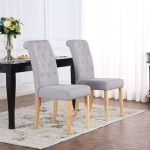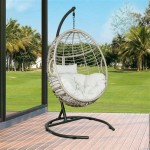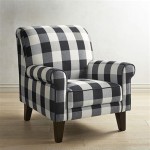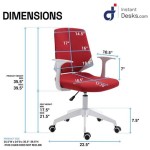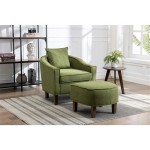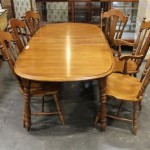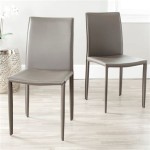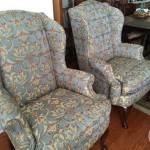Kitchen Chairs Designed for Durability and Support: A Guide for Heavy Individuals
Selecting appropriate seating for the kitchen is a crucial aspect of home design, impacting both comfort and safety. For individuals who require furniture with enhanced weight capacity and structural integrity, the selection process demands particular attention. Kitchen chairs designed for heavier individuals prioritize robust construction, durable materials, and ergonomic considerations to ensure both long-term usability and user well-being. A careful evaluation of weight capacity, material composition, design features, and user reviews is essential to make an informed decision.
Traditional kitchen chairs often lack the necessary reinforcement to accommodate significantly increased weight loads. These chairs may exhibit instability, potentially leading to accidents and injuries. Furthermore, prolonged use of inadequate seating can contribute to discomfort and exacerbate existing musculoskeletal issues. Investing in chairs specifically engineered for higher weight capacities is a proactive step toward enhancing safety, promoting comfort, and extending the lifespan of the furniture itself.
The market offers a range of options in styles and materials. Understanding the various available features, limitations, and benefits is paramount for selecting a chair that suits specific needs and complements the kitchen’s aesthetic.
Key Considerations When Choosing Kitchen Chairs for Heavy Individuals
Several factors should be meticulously evaluated when selecting kitchen chairs designed for heavier individuals. These considerations encompass weight capacity, construction materials, ergonomic design, seat dimensions, and additional features that contribute to overall comfort and stability.
Weight Capacity: This is arguably the most crucial aspect. Manufacturers typically specify the maximum weight capacity of their chairs. It is imperative to select a chair with a weight capacity that comfortably exceeds the user’s weight, allowing for a safety margin. Overloading a chair beyond its rated capacity can lead to structural failure, creating a potentially hazardous situation. A chair rated for a minimum of 300 pounds is generally recommended for heavier individuals, with options available for capacities exceeding 500 pounds depending on individual needs.
Construction Materials: The materials used in the chair's construction directly influence its durability and stability. Commonly used materials include solid wood, metal, and reinforced polymers. Each material possesses distinct advantages and disadvantages. Solid wood chairs, particularly those crafted from hardwoods like oak, maple, or beech, are known for their strength and longevity. Metal chairs, often constructed from steel or aluminum, offer excellent weight-bearing capabilities and are resistant to corrosion. Reinforced polymers provide a lightweight yet durable alternative, suitable for modern designs and outdoor use. The choice of material should align with the desired aesthetic, budget, and expected level of use.
Ergonomic Design: Ergonomics plays a crucial role in promoting comfort and preventing discomfort during extended periods of sitting. Look for chairs with features such as a contoured seat, lumbar support, and a supportive backrest. A contoured seat distributes weight evenly, reducing pressure points and promoting circulation. Lumbar support helps maintain proper spinal alignment, minimizing strain on the lower back. A well-designed backrest provides comfortable support for the upper back and shoulders. The height of the chair should also be suitable for the user and the height of the kitchen counter or table.
Exploring Material Options and Their Impact on Durability
The choice of material dictates not only the aesthetic appeal but also the long-term durability and maintenance requirements of kitchen chairs designed for heavier individuals. A comprehensive understanding of the properties of different materials facilitates an informed decision-making process.
Solid Wood: Solid wood chairs are a classic choice, valued for their strength, durability, and natural beauty. Hardwoods such as oak, maple, and beech are particularly well-suited for chairs designed to withstand significant weight loads. These woods are dense and resistant to wear and tear. Wood chairs can be stained or painted to match any kitchen décor and can be refinished over time to maintain their appearance. However, wood chairs are susceptible to moisture damage and may require periodic maintenance, such as applying a protective sealant.
Metal: Metal chairs, typically constructed from steel or aluminum, offer exceptional strength and stability. Steel chairs are particularly robust and can withstand heavy use. Aluminum chairs are lighter than steel chairs and are resistant to corrosion, making them suitable for outdoor use. Metal chairs are often powder-coated to provide a durable and aesthetically pleasing finish. While metal chairs are generally easy to maintain, they can become cold to the touch and may require cushions for added comfort.
Reinforced Polymers: Reinforced polymers, such as polypropylene or polycarbonate, offer a lightweight and durable alternative to traditional materials. These materials are resistant to moisture, stains, and fading, making them ideal for use in the kitchen environment. Polymer chairs are available in a wide range of colors and styles, offering versatility in design. While polymer chairs may not be as visually appealing as wood or metal chairs, they are a practical and cost-effective option for those seeking durability and low maintenance.
Design Features That Enhance Stability and Support
Beyond material selection, specific design features contribute significantly to the stability and support offered by kitchen chairs designed for heavier individuals. These features include frame construction, bracing mechanisms, and seat design.
Frame Construction: The frame is the structural foundation of the chair and must be robustly constructed to withstand the stresses of regular use. Look for chairs with a solid frame made from thick, high-quality materials. Joints should be reinforced with screws, bolts, or dowels to prevent loosening or failure over time. Corner bracing can further strengthen the frame, providing additional support and stability. The overall design of the frame should be stable and balanced, with a wide base to prevent tipping.
Bracing Mechanisms: Bracing mechanisms, such as stretchers or crossbars, add rigidity to the chair frame, preventing wobbling and increasing weight-bearing capacity. Stretchers connect the legs of the chair, providing lateral support and preventing the legs from splaying outwards under load. Crossbars can be added to the backrest or seat to further reinforce the structure. The presence of effective bracing mechanisms is a strong indicator of a well-designed and durable chair.
Seat Design: The design of the seat plays a crucial role in providing comfort and support. A wide and deep seat is generally more comfortable for heavier individuals. A contoured seat distributes weight evenly, reducing pressure points and improving circulation. The seat should be made from a durable material that can withstand heavy use without sagging or collapsing. Consider seat cushions made from high-density foam for added comfort and support.
It is also important to consider the chair's overall footprint. Wider chairs will inherently provide more stability, minimizing the risk of tipping. The height of the chair back should be sufficient to offer adequate back support, but not so high as to interfere with comfortable interaction at the kitchen table or counter. The depth of the seat should be sufficient to support the thighs adequately without putting undue pressure on the back of the knees.
Before making a purchase, thoroughly research the manufacturer's specifications and read customer reviews to gain insights into the chair's actual performance and durability. Pay close attention to reviews from individuals who have similar body types and usage patterns, as their experiences will be particularly relevant. Check for any reported issues regarding stability, weight capacity, or material defects. A well-informed decision will ensure that the selected kitchen chairs provide long-lasting comfort, safety, and support.
Proper maintenance is essential to extend the lifespan of kitchen chairs designed for heavier individuals. Regularly inspect the chairs for loose screws, cracks, or other signs of damage. Tighten loose screws and repair any damage promptly. Clean the chairs regularly with a mild soap and water solution to remove dirt and grime. Avoid using harsh chemicals or abrasive cleaners, as these can damage the finish. By following these simple maintenance guidelines, it is possible to maintain the chairs in optimal condition for many years of comfortable and reliable use.

Heavy Duty Restaurant Chairs Commercial

Large Weight Capacity Dining Chairs Up To 60 Off

Dining Kitchen Chairs For Heavy People Up To 1000lb

Amish Heritage Swivel Dining Room Chair Or Office

Dining Kitchen Chairs For Heavy People Up To 1000lb

Best Kitchen Chairs With Wheels For Cooking Only From Vela

Lue Bona Windsor Classic Black Solid Wood Dining Chairs With Curving Spindle Back For Kitchen And Room Set Of 4 2dpthd23ws 1 The Home

Printed Mixing Grey And Black White Dining Chairs For Heavy People Antique Plaid Made In Com

Sturdy Dining Chairs Bariatric Heavy Duty Rosehill Furnishings Shop Online

Mid Century Modern Dining Chairs Set Of 2 Velvet Rattan Olive
